The ferocious guitarist—and singer-songwriter and bandleader—has a brand new rig for 2023. Check it out!
Two months ago, Lindsay Ell released her latest single, “Sweet Spot,” plus she’s on the way to issuing a new album, following up 2020’s Heart Theory. And for the tour leading into her next record, she’s also got a passel of updated gear since her 2018 Rig Rundown. No surprise, since there’s always something new happening with Ell—whether it’s touring under her own banner or with Shania Twain, scooping up Canadian Country Music Association awards, or serving as a judge on Canada’s Got Talent.
When it comes to guitars, Ell’s 6-string tastes run to the classics and custom-builds, and she’s got her signature OD aboard, so let’s take a look.
Brought to you by D’Addario XS Strings.
Play Mary Kaye
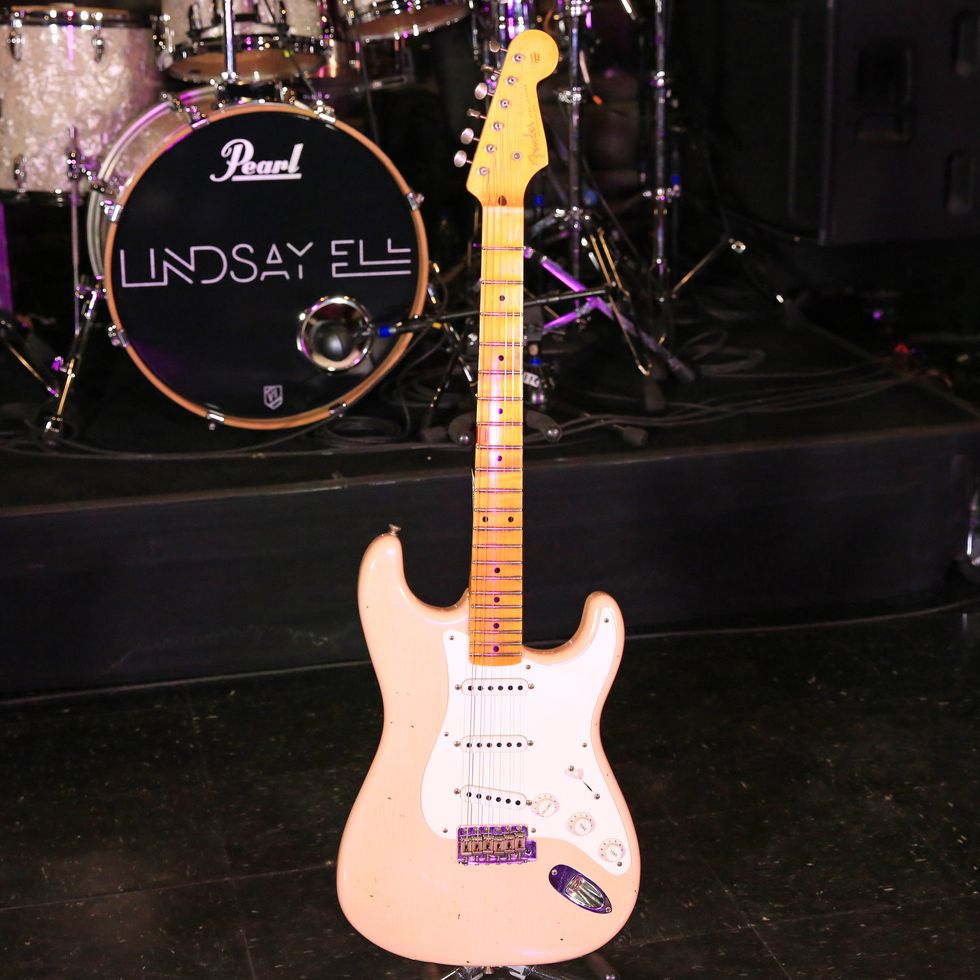
“I’m a Strat girl,” Lindsay Ell attests. And this one, a Fender Custom Shop ’56 Strat in aged shell pink, was a gift from Keith Urban. It’s got jumbo frets and has become a studio and road favorite.
Stitched-Up Heart
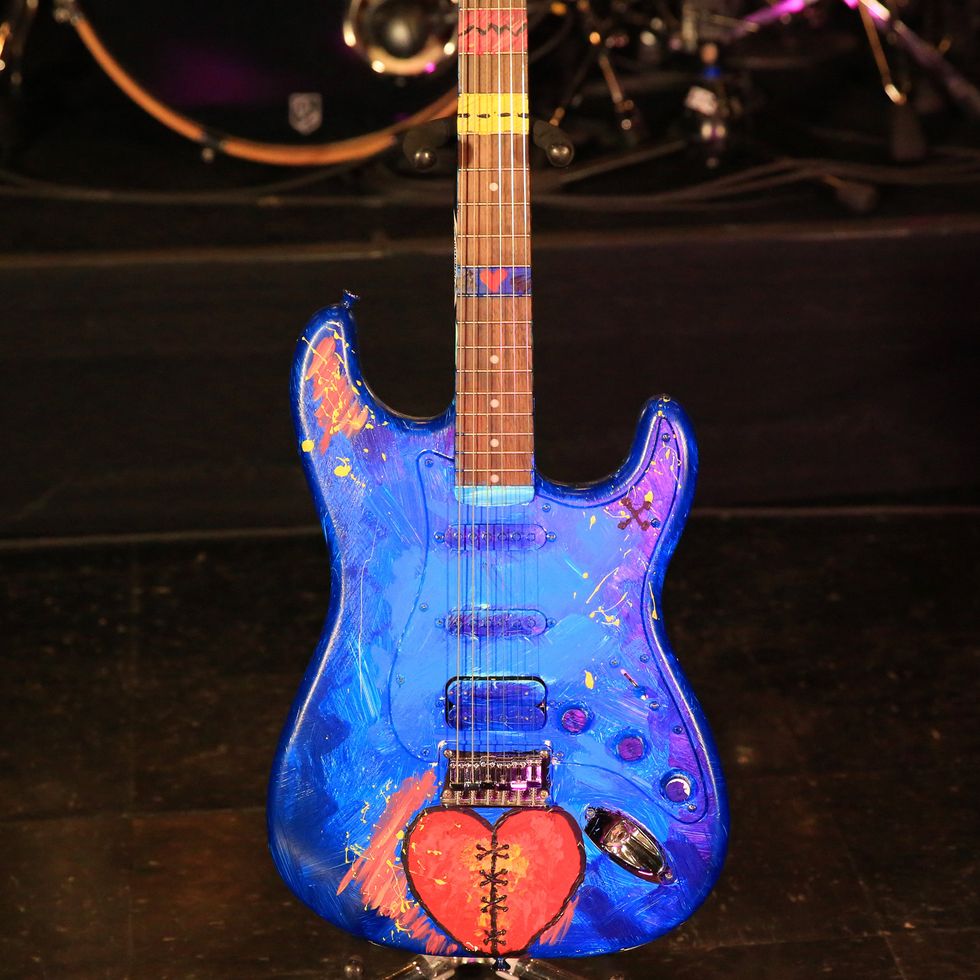
On her last Rig Rundown, Lindsay was touring with several Strats that she had handpainted. This tour, she’s continuing the tradition with this funky-beautiful Fender Standard Strat she calls “Just Another Girl.” Note the humbucker-and-two-single-coils combination, and, of course, the stitched-up heart.
Paint It, Blue
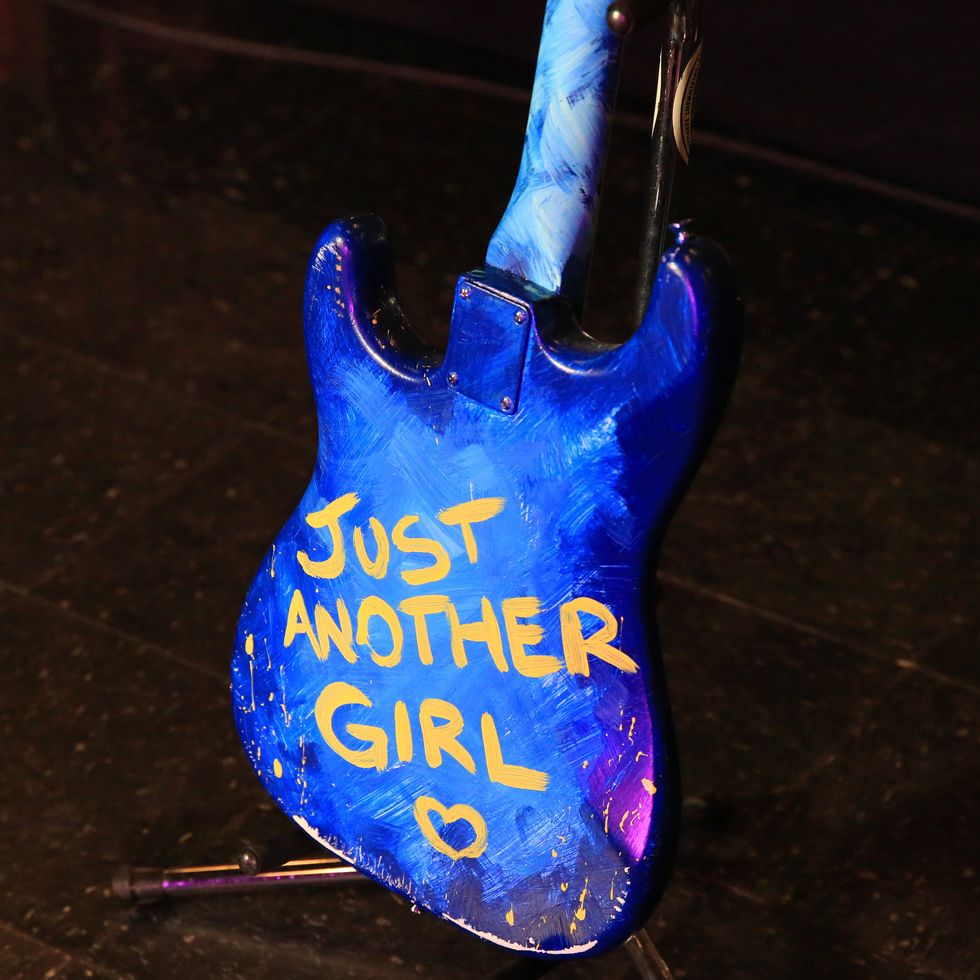
The backside of Ell's Fender Standard Strat that wears the title of popular track from her 2017 album, The Project.
High-Flying Strat
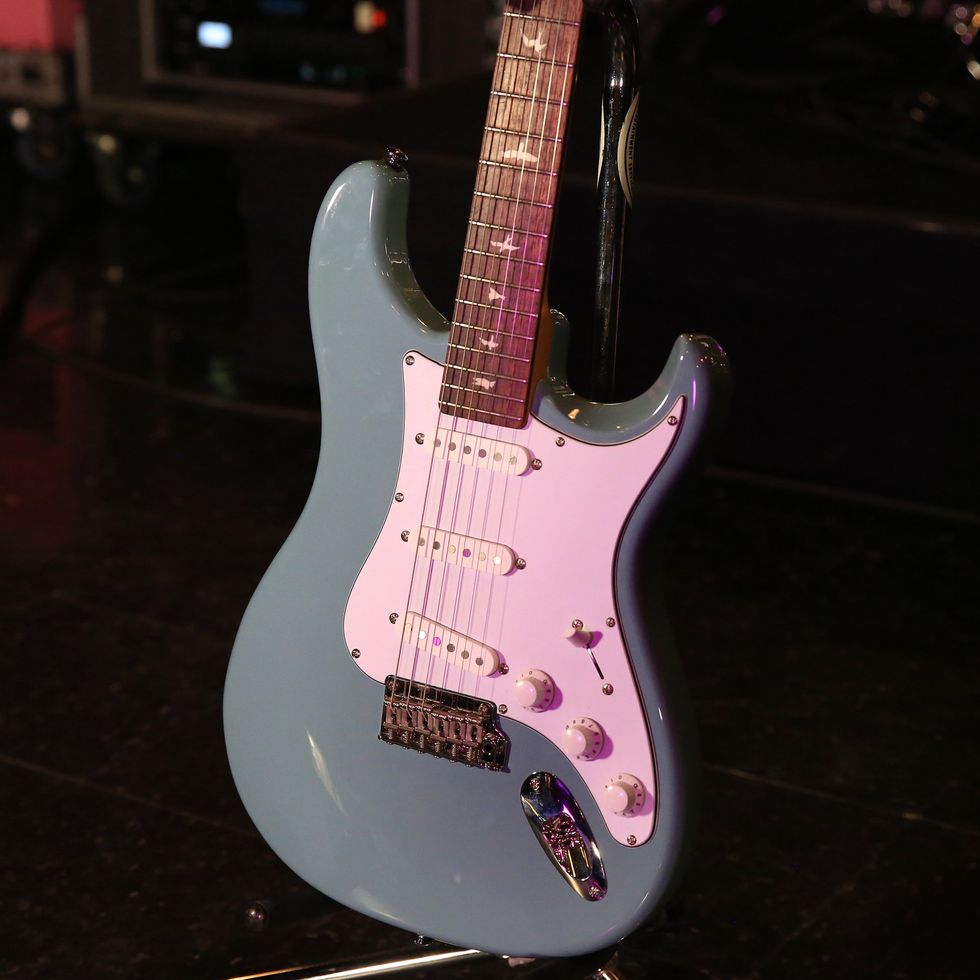
Ell was asked by John Mayer to play in the video that announced the release of his PRS SE Silver Sky, the lower-priced version of his signature Paul Reed Smith model. This is the guitar she played in that video.
Lil’ Red
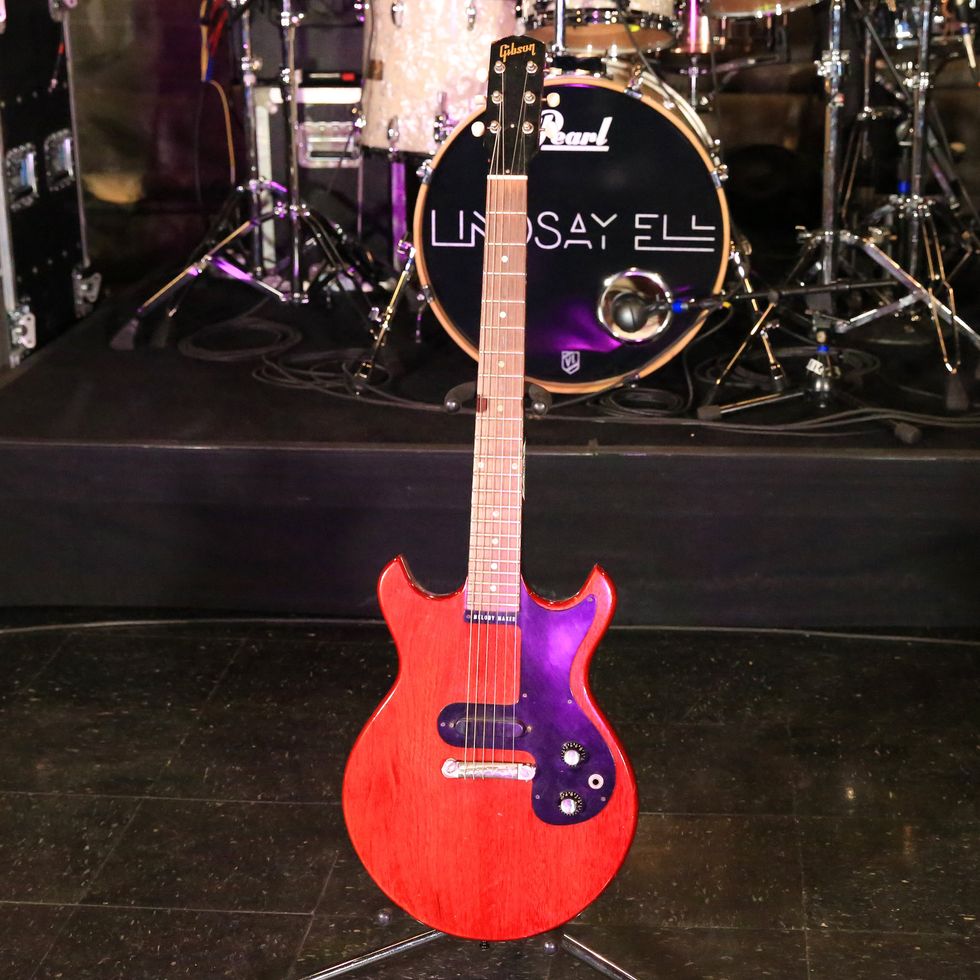
This vintage, all-stock Gibson Melody Maker from the 1960s was also a gift from Keith Urban—a thank you for opening dates on his spring 2023 tour.
Ultra, Man
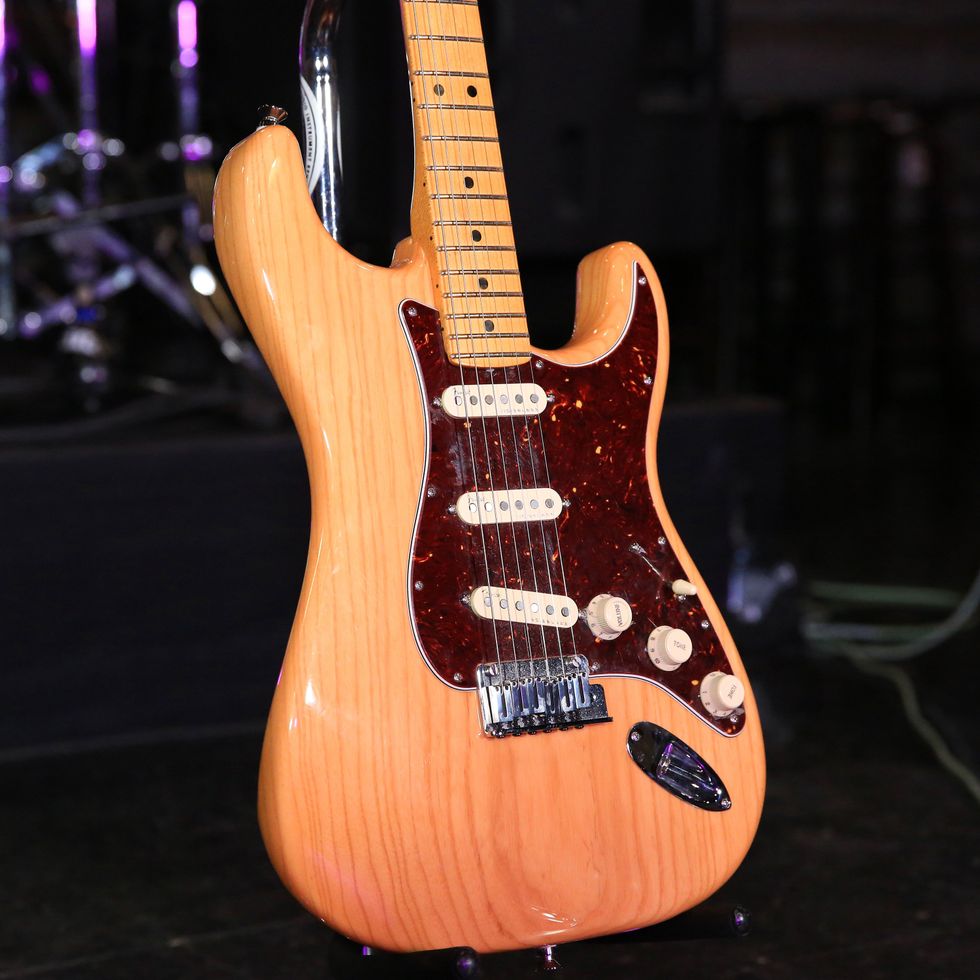
This Fender Ultra Strat, in an aged ash natural finish, is currently Lindsay’s main go-to onstage. This hot rod is outfitted with Fender’s noiseless single-coil pickups. Elle’s guitars are strung with a variety of sets, including green DR Strings (.010–.048s0, Stringjoys (.095–.048), and D’Addario .010–.052s and .011–.052s. Her picks are D’Addario heavies.
Mahogany Marvel
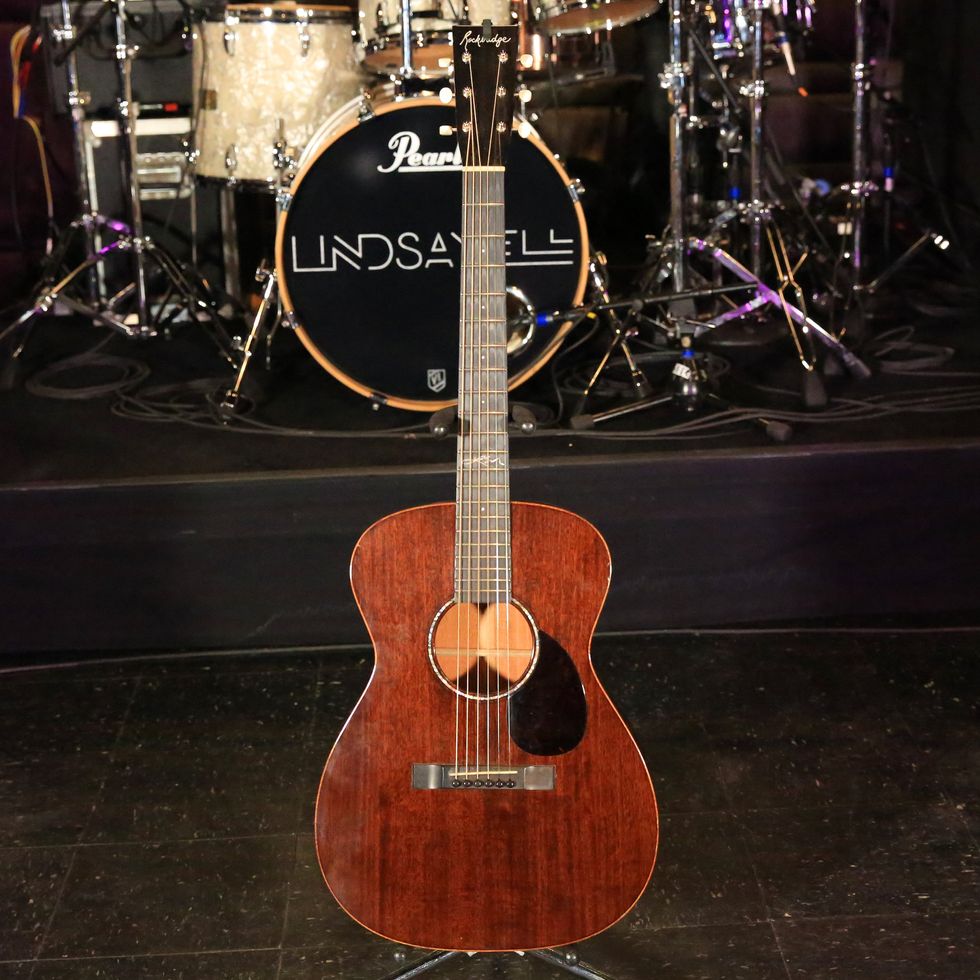
Ell’s main acoustic is a custom-built Rockbridge OOO made of mahogany by Brian Calhoun in Charlottesville, Virginia. It’s a major switch for this longtime Martin player.
Amp Duo
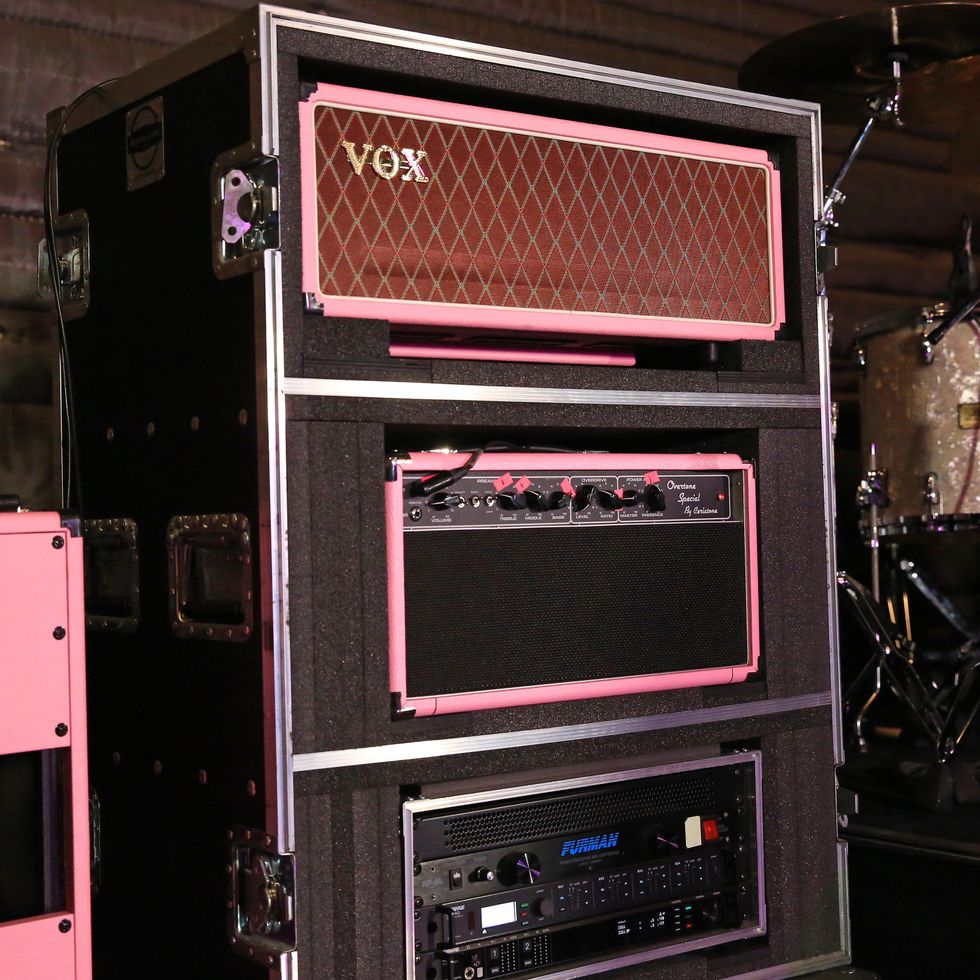
Ell plays through a pair of amps: a Vox AC30 head and a Ceriatone Overtone Special. That’s a Furman power conditioner beneath the pair of heads.
Cute Cabs
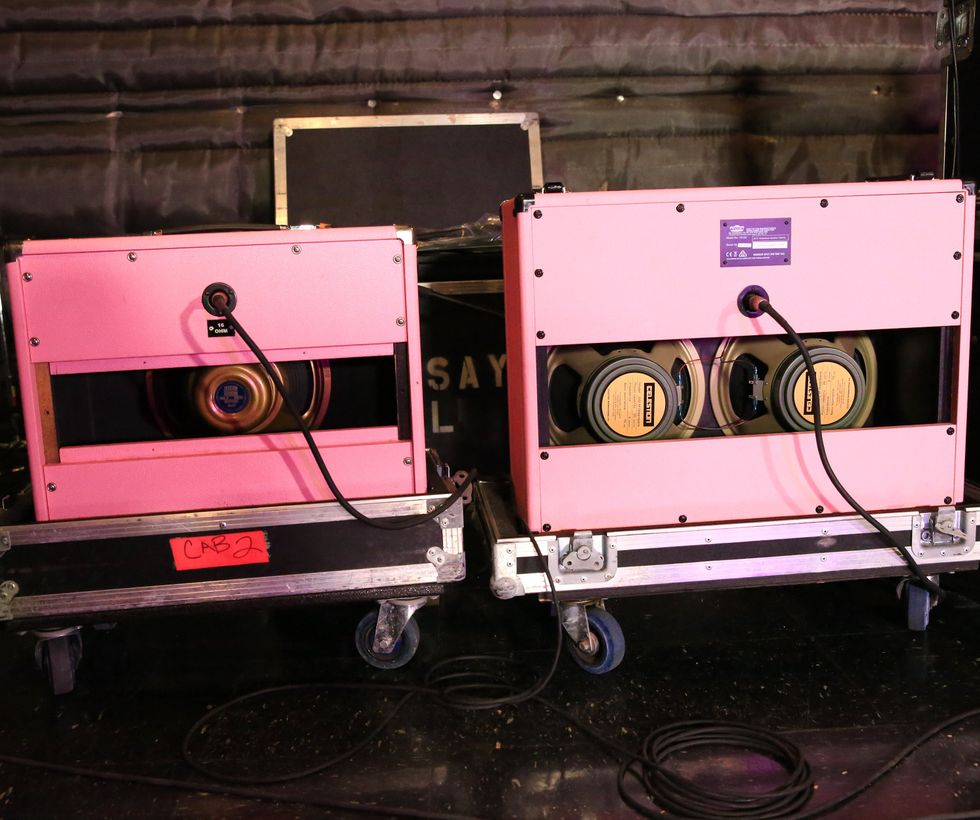
The AC30 hits a 2x12 with Celestion Greenbacks and the Ceriatone slams a 1x12 Dr. Z cab with a Celestion Gold speaker.
Lindsay Ell's Pedalboard
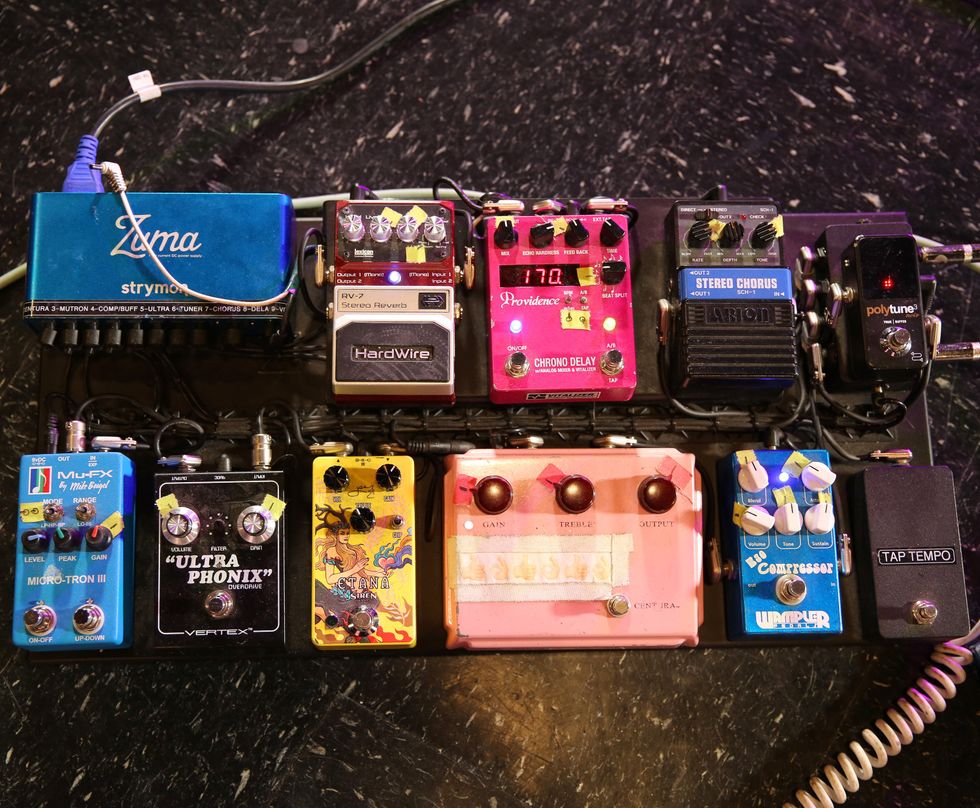
Lindsay’s pedalboard contains a PolyTune 3 Noir, a Wampler Ego Compressor, a Ceriatone Centura Professional Overdrive, a signature Siren Etana drive, Vertex Ultraphonix OD, an MU-FX Micro-Tron III filter, an Arion Stereo Chorus, a Providence Chrono Delay, a HardWire RV-7 Stereo Reverb, and a Strymon Zuma power supply.
Dabbling with Digital

In addition to her trad tube amp-and-pedalboard combo, Lindsay also has a Neural DSP Quad Cortex on tap that has modeled tones of her amps.
![Rig Rundown: Lindsay Ell [2023]](https://www.premierguitar.com/media-library/rig-rundown-lindsay-ell-2023.jpg?id=33771387&width=1200&height=675)






![Rig Rundown: AFI [2025]](https://www.premierguitar.com/media-library/youtube.jpg?id=62064741&width=1245&height=700&quality=70&coordinates=0%2C0%2C0%2C0)












 Shop Scott's Rig
Shop Scott's Rig















![Devon Eisenbarger [Katy Perry] Rig Rundown](https://www.premierguitar.com/media-library/youtube.jpg?id=61774583&width=1245&height=700&quality=70&coordinates=0%2C0%2C0%2C0)












